Mr. Tolkien’s War: A Review of Peter Jackson’s ‘They Shall Not Grow Old,’ by Rob Bokkon
Anyone who knows me at all well can tell you that I don’t really have a personality, per se: what I have instead is a gigantic amalgamation of obsessions. Fandoms. Things like the life and work of Prince Rogers Nelson. Hungarian cuisine. The history of Jim Jones and Peoples Temple. The films of Peter Jackson. The Great War.
So, obviously, when word came through that those last two things were colliding, in the form of a documentary commissioned by the Imperial War Museums, I was nearly beside myself. If anyone could capture the horror and the bravery of the Great War, it’s the guy who gave us the Pellenor Fields and the Battle of Five Armies on the big screen. I counted the days until the release date. I jabbered about it to all three people I know who love WWI as much as I do. I was, to put it mildly, stoked.
Which remained my default state right up until I sat down in the theater to absorb what I truly hoped would be a modern masterpiece. The truth, as always, was rather more complicated.
The version we saw was bookended by both an introduction, and making-of featurette, from Mr Jackson himself. It is my current understanding that the greater theatrical release of the film will not include these, which is a pity, as the film loses much of its impact when one is unaware of the sheer labor of love involved in the restoration of the old footage. And, of course, consider yourselves warned that SPOILERS ABOUND, both for the film and for the works of J.R.R. Tolkien.
The theater was almost three-quarters full, which surprised us; the crowd was fairly diverse, but included a high proportion of fit middle-aged guys in outdoor-pursuits gear, who by their conversation seemed mostly to be veterans. We live in a university town, so the history dorks (us) were also well-represented. The former dean of the college of arts and letters was there. Enthusiasm was high.
And then we fucking sat there for thirty solid minutes. Not thirty minutes of previews, mind you, but some “edutainment” compiled by Fathom Features that consisted of an “interactive” quiz, six multiple-choice questions about the Great War–“Did the Great War take place in A: 1914-1918, B: 1861-1865, C: Never, D: Last Week” and “Was Baron Von Richtoven, aka the ‘Red Baron’, a A: toilet cleaner in Bournemouth, B: your mom, C: a famous WWI flying ace with 80 confirmed kills or D: the inventor of owls?”–designed for people who have never heard of the Great War.
But when the film finally began, and the rowdy high-schoolers three rows back finally shut up, absolutely everyone in the room was transfixed.
Because this movie is stunning.
It begins and ends with images of the war with which we are familiar, in shades of silver and black and white, complete with the sound effect of an antique projector. The voice-overs are the voices of old men, disconnected from their source, joined to past time and image only by association. Jackson’s decision to jettison traditional narration in favor of archival recordings from Great War veterans is meant to grant immediacy to the film by immersing the viewer in direct experience rather than received history.
The question that must be asked is, “Does this work?” And the answer is, yes and no. While my socialist soul champions the decision to represent the War exclusively from the perspective of the people who actually fought the damn thing, the narrative feels tailored nonetheless. Blame it perhaps on the source material, as the archival audio was taken from something like 600 hours of interviews done in the ‘50s and ‘60s by the Imperial War Museums, who clearly have their own version of the War they wish to promote. A version of the war where the sun still has not set on the British Empire, George V regards us all favorably from the wall of every post office, the tea is hot and everyone knows their place.
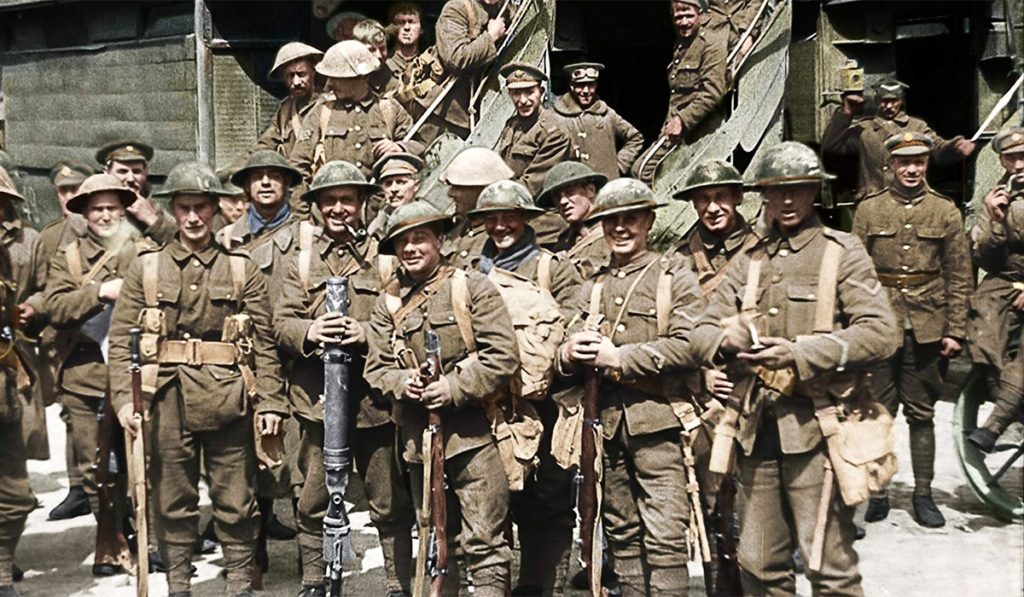
There are moments—a few—in the voice-overs where a note of fatalism or horror or even protest will arise. Mild moments, expressed with little fervor, which seem to be included only to evoke veracity. At the end, we get a series of voices reminding us that war is useless, pointless, a waste. A series of voices that feels tacked-on, as though we as an audience of modern sensibilities expect to hear this condemnation. Overall, throughout the film we hear the stories of Tommies who were happy to be there, who’d “go over again,” who missed it when they left, who saw it as “a job of work that had to be done.” Is this the overarching experience of the average British soldier in the war?
My reading has told me otherwise. Robert Graves’ Good-Bye to All That certainly seems to indicate otherwise. Siegfried Sassoon would undoubtedly curl his lovely aristocratic lip at the very notion. Is it worthwhile to hear these voices, these stories? Absolutely. Is it honest? This I cannot answer, but I have doubts.
But never mind that. You’ll forget all your criticism, all your doubt, if just for a moment, when that color footage hits the screen.
Jackson has always directed with a cinematographer’s eye, and this film is no exception. The first few shots of Tommies arriving in France, clad in khaki (a very authentic shade of khaki, as it turns out; Jackson spent weeks getting the color exactly right from uniforms in his private collection, since Peter Jackson is the world’s biggest World War I geek), baring their very British smiles for the camera: these are enough to make you forget that this footage ever existed in another form. The color used is not the bright and hyper-real shading of a modern film. The tones are very much those of a color photograph from 1914, which just serves to make the images seem more immediate and real.
The soundtrack at this point becomes a thing of pure artifice, but what artifice—Jackson’s otaku devotion to detail has never been showcased to greater effect. As revealed in the making-of featurette at the end, lip-readers were employed to pore over the footage and to reconstruct all possible dialogue. Then, by identifying uniforms or cap-badges, Jackson was able to place the regiments, and based on their origins (Royal Welch, Lancashire, &c.) actually found actors from the appropriate locales and hired them to do the voice-overs. Further, every boot hitting the mud, every rustle of a rucksack, every clank of a helmet being thrown to the ground is there.
My jaw stayed on the floor for a long while. It is beautiful, there’s no denying that. It is a labor of love. And in true Peter Jackson style, the camaraderie of camp life, the minor inconveniences and sanitary arrangements, or rather the lack thereof, the cheerful bitching about the cheap beer and wretched cigarettes lasts only a little while, to be replaced by the screaming terror of battle and its stomach-turning consequences. Jackson has never pulled his punches when it comes to revolting images (if you’ve ever seen Dead Alive or Meet the Feebles you’ll know what I’m talking about) and this film is no exception. Popcorn went untouched when the images of trench foot, bloated corpses, maggots and rats swarm across the screen.
And yet, it is here that the film reaches its greatest artistic heights. Again and again I was reminded of the works of Otto Dix. For those who don’t know him, Dix was an enthusiastic volunteer for the German army in 1914, whose drawings from the front remain a poignant and disturbing testament to the aesthetic impact of conflict. His true fame came during Weimar Berlin, which earned him the enmity of the Nazis, who denounced him as a “degenerate artist.”
In They Shall Not Grow Old, a shot of a disemboweled cavalry horse strongly recalled Dix’s Horse Cadaver, the animal’s ruined body a testament to the service of all the animals who aided in the war effort.
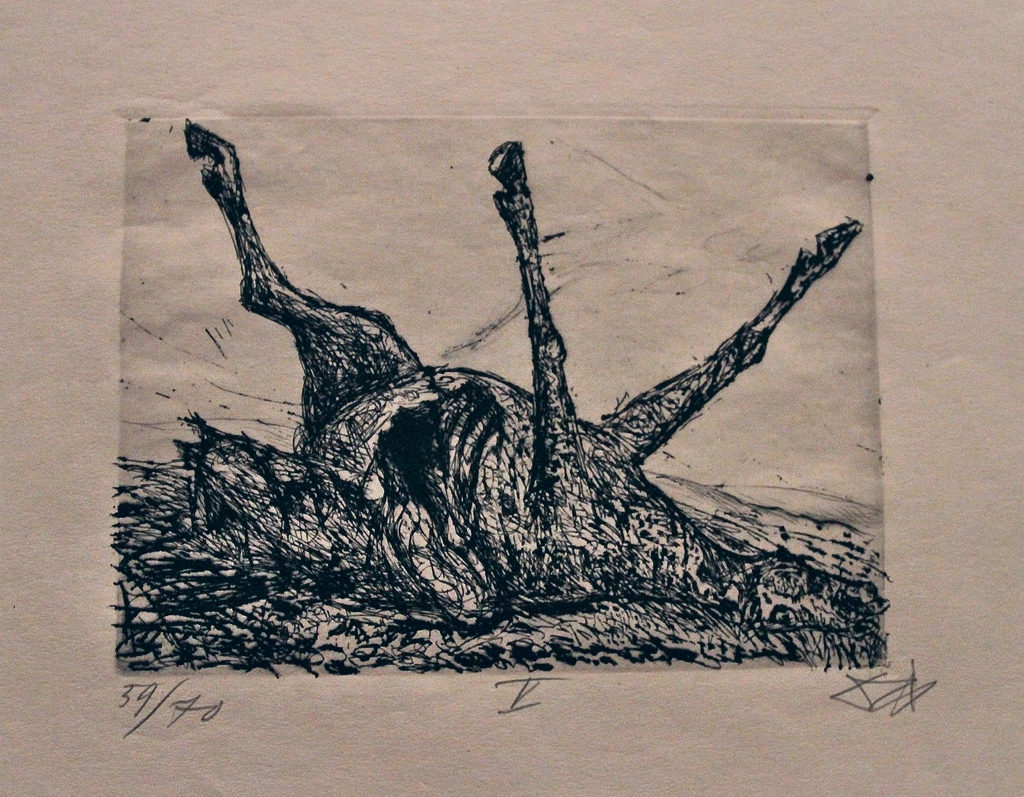
Many times Jackson shows bodies dangling, untended and ignored, from barbed wire, akin to those from the War Triptych or the obviously named but no less striking Corpse on Barbed Wire.
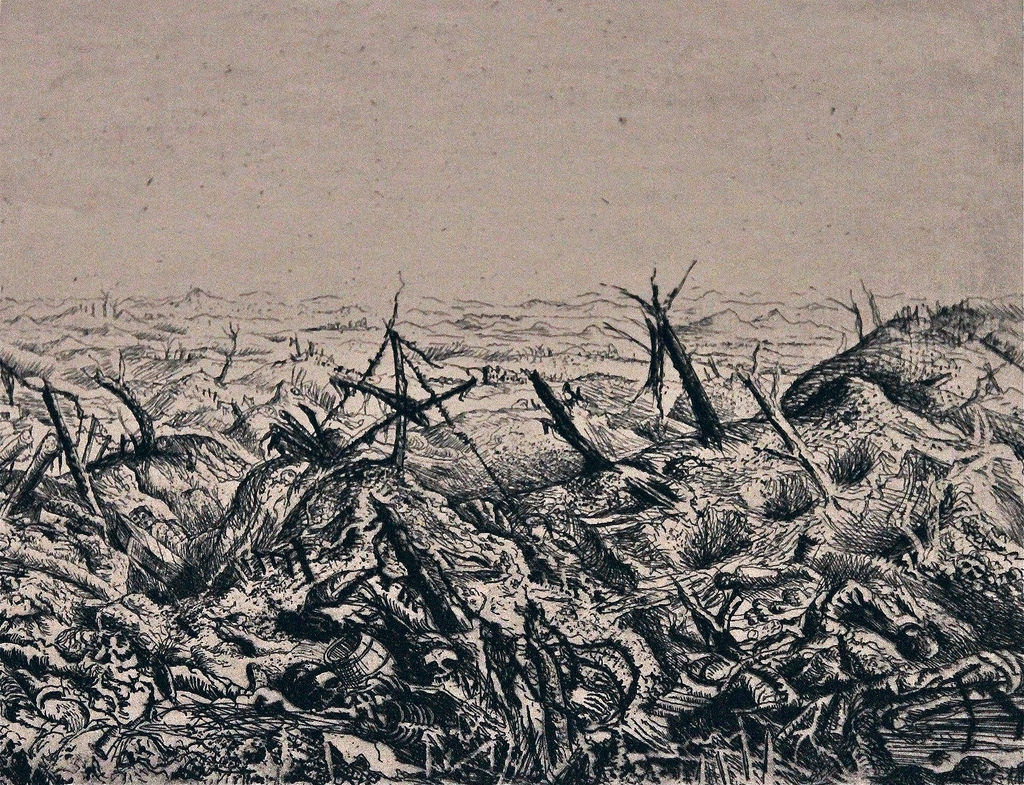
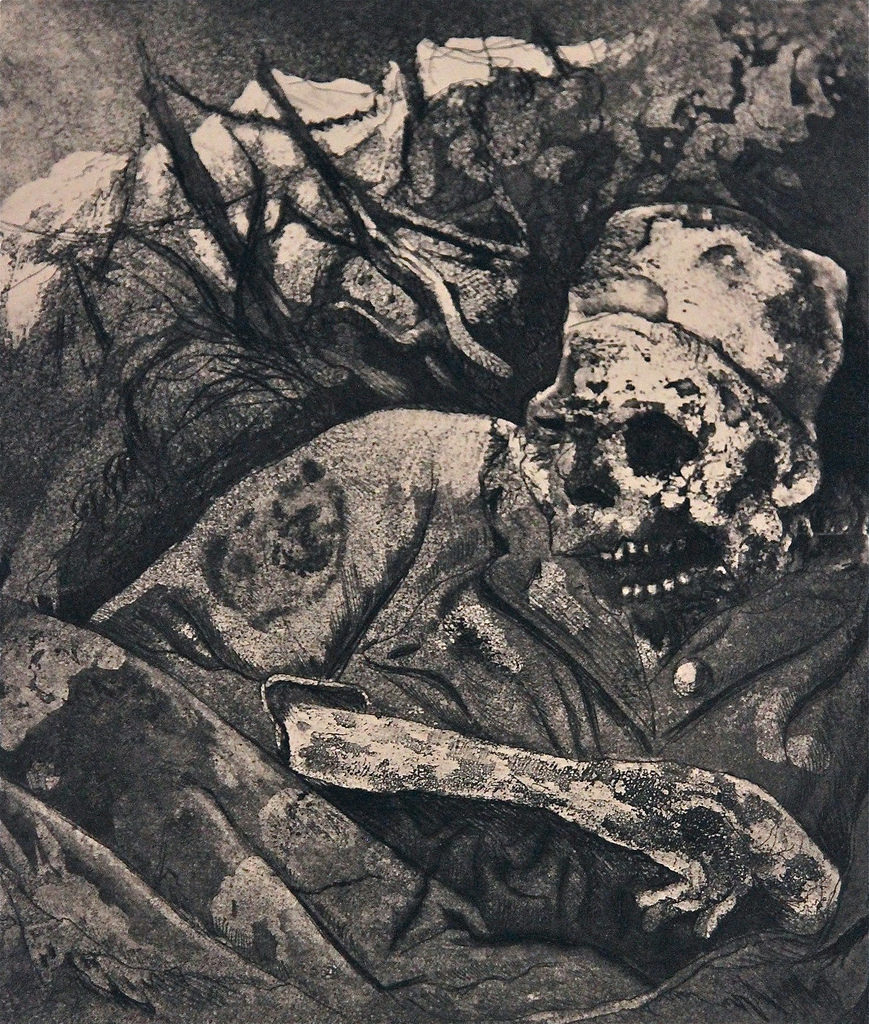
A group of Tommies, exhausted, huddled together in their trench, are positioned almost exactly like Dix’s Resting Company, the only difference their uniforms. The parallels were too obvious to ignore; Jackson, in his years of searching through the footage provided by the War Museums, had clearly searched for and found footage that matched the works of Dix. Otto Dix, perhaps more than any other artist, truly captured the soul-killing dread and visceral, bleak reality of this war. Jackson, in his deep and thorough understanding of his subject, chose images echoic of Dix’s in order to evoke in the viewer that same sense of despair, of resignation, of trauma. This conscious homage is my favorite takeaway from Jackson’s film.
Whether conscious or not, however, Jackson’s most prominent homage, and ultimately the film’s downfall, lies in its obvious parallels to his most famous subject matter: the works of Tolkien.
J.R.R. Tolkien served in the Lancashire Fusilliers, as a signal-officer. He saw action at the Somme and lost two of his closest school friends to the War.
The narrative structure of They Shall Not Grow Old is, almost exactly, that of Lord of the Rings. A group of brave, innocent Englishmen/hobbits, inadvertently forced away from the comforts of hearth and home, reluctantly but bravely sally forth to do their duty in the face of certain destruction. Along the way, their innocence is lost. They confront unimaginable evil and emerge scarred, only to return home to a land unwelcoming, hostile, entirely changed from the one they left.
Of course, Jackson cannot be blamed for telling the truths of the War; this narrative, though romanticized and muddled, parallels the experience of many Englishmen during the War. It was certainly Tolkien’s narrative. It is the very Englishness of the narrative that presents us with the film’s biggest problem, one Andria Williams (of the Military Spouse Book Review, and a Wrath-Bearing Tree editor) also covered extensively in her review, which is that of representation.
To the casual viewer, seeing They Shall Not Grow Old leaves one with the clear impression that the entire Great War was fought by the British infantry and artillery, more or less single-handed. The French of course are mentioned, and even seen in a few shots, but overall the collection of images on the screen is of British, Welsh, Scots and Irish troops, every face a white face. The British West Indies Reserves are never seen. The film is innocent of a single Sepoy, there are no Gurkhas, no Malays.
In the featurette at the end of the film, Jackson addresses these concerns with a literal wave of the hand and a dismissive remark about the focus of the picture and the material available to him, while the screen actually shows unused footage of black troops, giving the lie to his explanation even as he offers it. What really pissed off your humble reviewer was the sentence Jackson used to cap this segment of the featurette: “This is a film by a non-scholar, for non-scholars.”
Wow. OK. Certainly it’s not an academic film, but to suggest that giving representation only to white British troops on-screen is in some way justifiable because the film is “by a non-scholar” rubbed me the wrong way. Mr Jackson, you’re going to tell us that you, the man who owns a closetful of original WWI uniforms—the man who literally minutes before was showing off his collection of actual Great War artillery pieces—the man who admitted to owning every issue of The War Illustrated magazine—you, of all people, would offer this lame excuse?
I think the issue here is not an actual dishonesty on Jackson’s part, however. I believe that his inability to see his own biases stems from a long association with the works of Tolkien, in which the War of the Ring is fought and won by the Men of the West, the people of Gondor and Rohan. (Although as noted by other viewers of this film, even Tolkien’s coalition was more diverse than the one shown in They Shall Not Grow Old—at least the Fellowship included elves and dwarves).
The issue of Tolkien’s source material, and whether or not it is actively or casually racist, is one that encompasses far too great a scope for this review. Certainly Tolkien did not think himself a racist, and was a vocal opponent of Nazi racialist theories, even going so far as to send a series of nasty letters to a German publisher who wanted to reprint The Hobbit in the late ‘30s but only after confirming if Tolkien was “arisch”—that is, Aryan. He also hated apartheid, having been born in South Africa, and was similarly vocal in his condemnation of the practice.
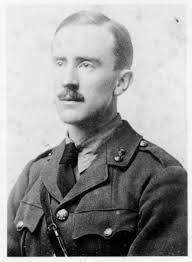
Yet there are Tolkien’s own works, which reflect the unthinking cultural biases of a man born in the Victorian era who came of age in the Edwardian. The nations of the East (Rhun, Harad, &c.) are all populated by dark-skinned Men who are under the thrall of Sauron. Tolkien’s own remarks about the appearance of Orcs (found in his letters) include a distressing description of them as like “the unlovliest of the Mongol-types,” and he explicitly stated that the gold-loving Dwarves were based on the Jewish people, for whom he nurtured a public admiration his whole life, but the association is an uncomfortable one to modern thought.
In conclusion: should you see this film? Absolutely. Should you see it with caveats and reservations? Clearly. Beautiful but flawed, They Shall Not Grow Old is a necessary film, but an incomplete one.